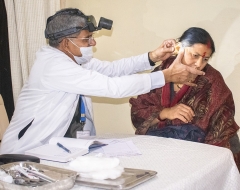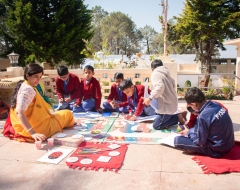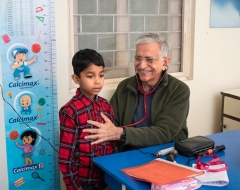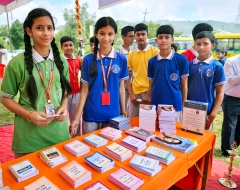Paramahansa Yogananda wrote in Autobiography of a Yogi: "As the fragrance of flowers cannot be suppressed, so Lahiri Mahasaya, quietly living as an ideal householder, could not hide his innate glory. Devotee-bees from every part of India began to seek the divine nectar of the liberated master....The harmoniously balanced life of the great householder-guru became the inspiration of thousands of men and women."
As Sri Sri Lahiri Mahasaya exemplified the highest ideals of Yoga, union of the little self with God, he is revered as a Yogavatar, or incarnation of Yoga.
Paying homage to the Param Guru of devotees of Yogoda Satsanga Society of India (YSS), its Dwarahat Ashram hosted its Sangam beginning with the Mahasamadhi Divas of the Yogavatar (on September 26) and closing with the great master's Avirbhav Divas (on September 30).
This Dwarahat Sangam drew around 200 devotees from across the country to the scenic mountain town situated in Uttarakhand state in north India. The first day of the annual programme commenced with the opening satsanga where devotees were greeted by the YSS sannyasis Swamis Nityanandaji, Hiteshanandaji and Vasudevanandaji along with Brahmachari Nirliptanandaji.
The satsanga was preceded by beautiful bhajans sung by Brahmachariji. Immersed in devotion, devotees were led through the opening prayer by Swami Vasudevanandaji.
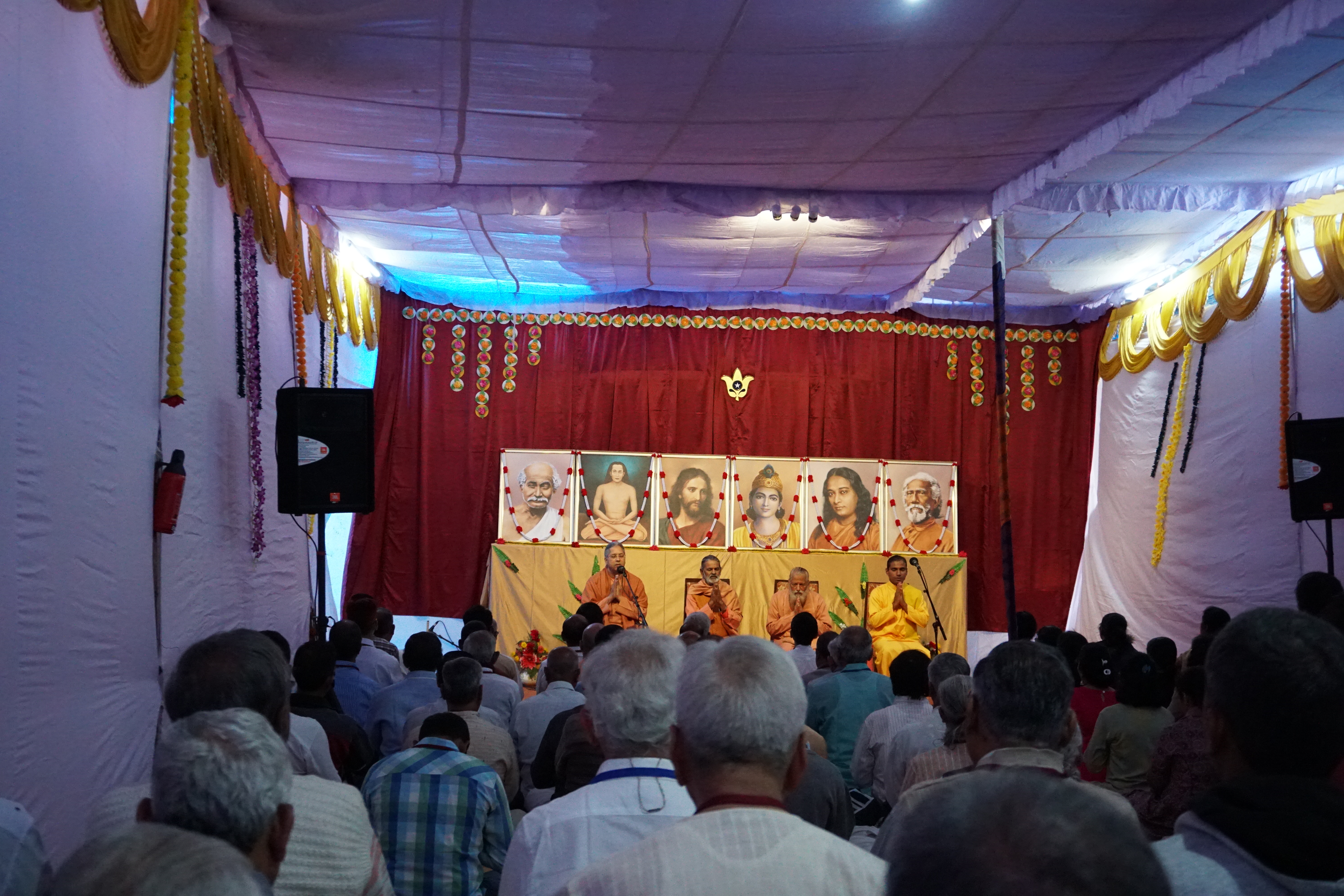
Following this address, Swami Nityanandaji inspired devotees through his opening satsanga. He urged them to make daily efforts to meditate better than the previous day putting their heart into it. Have only one desire, to know God. Guruji’s teachings are complete because he wrote what he perceived, not what he read. Practise the techniques correctly, use the retreats for review and counselling. The techniques are the aeroplane route. One must follow Guruji’s teachings in earnest, but also strive for a balance. Make God your first priority while serving society as well as fulfilling the God-assigned role and duties.
Sangams offer opportunities to devotees to stay in silence, meditate in groups, review their meditation techniques, and also seek responses to their queries through counselling by monastics. On the first day, Brahmachari Nirliptanandaji conducted a review session of the Energisation Exercises which was concluded with its second session on the following day. On the second day of the Sangam, a review of the Hong Sau meditation technique was conducted by Swami Vasudevanandaji. The Aum technique was reviewed for the devotees by Swami Hiteshanandaji.
On the third and fourth days, Brahmachari Nirliptanandaji and Swami Vasudevanandaji led long meditation sessions as a build-up to the Kriya Yoga Diksha ceremony scheduled for September 30. The six-hour-long meditation on September 29 was split into two sessions, including readings from the Gita, and audio recordings of Gurudeva Sri Sri Paramahansa Yogananda and Sri Sri Daya Mata were played apart from the regular singing of chants, bhajans and meditation. The session was begun by Brahmachari Nirliptanandaji and concluded by Swami Vasudevanandaji.
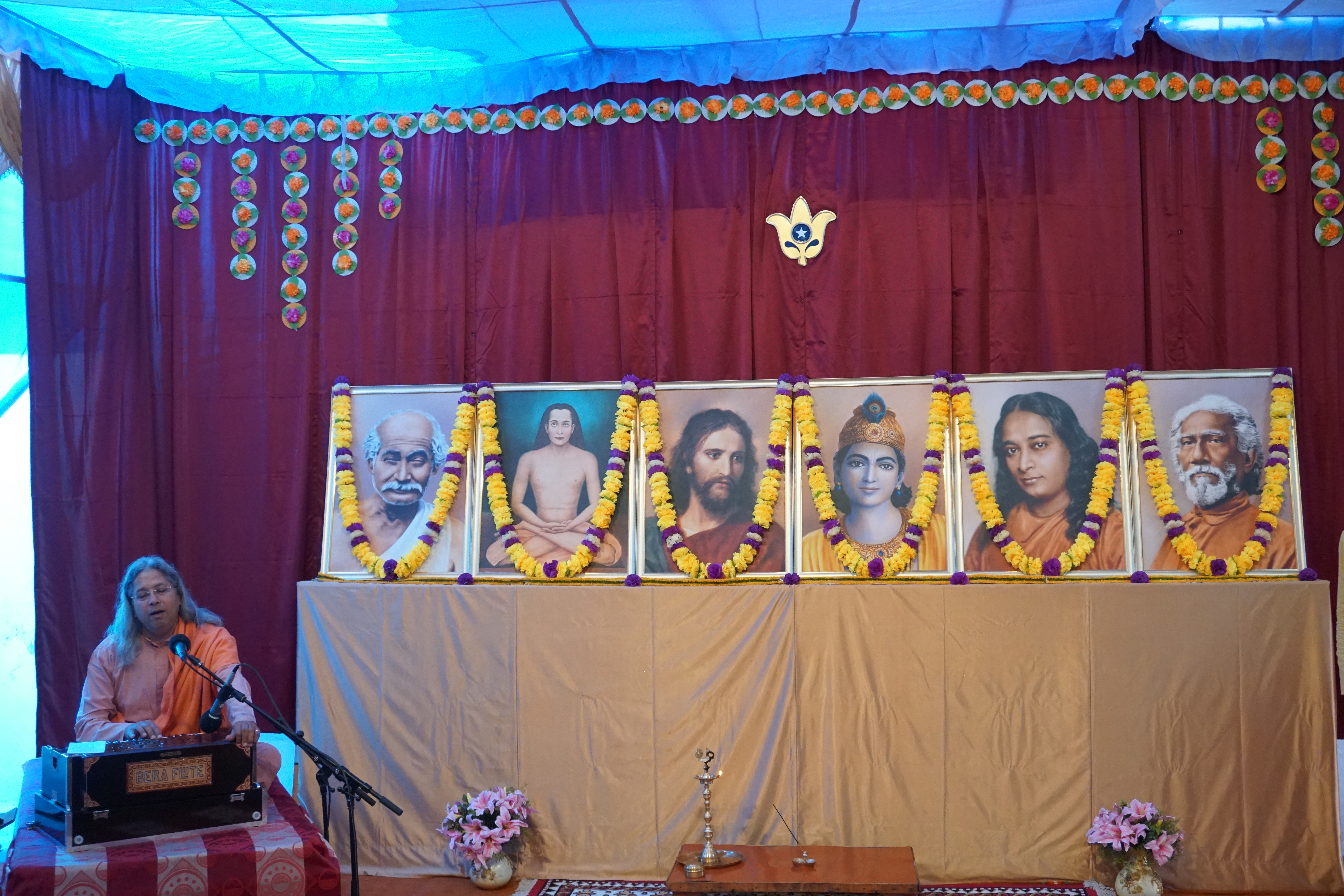
Devotees were entreated to enlightening satsangas by YSS sannyasis: One on 'The healing effects of forgiveness,' by Swami Vasudevanandaji, while the other was on 'Swadhyay: the Yoga Practice of Spiritual Study and Introspection,' by Swami Hiteshanandaji.
Based on the Bhagavad Gita, chapter XVI:3, Swami Vasudevanadanji took the examples of Guruji forgiving Kumar, Yudhishthir forgiving King Virat even before the act, Lord Krishna forgiving Shishupal for 99 of his sins, Saint Eknath forgiving a spiteful Brahmin for spitting on him more than 100 times. All these exemplified the quality to forgive as the characteristic of strength. Swamiji explained how highly Guruji regarded forgiveness when he said he preferred some sinners with good hearts to some so-called good people who were bigoted and uncompassionate. To be spiritual was to be broad-minded, to understand and to forgive, and to be a friend to all - just as God has infinite love and forgiveness, no matter what sins we, His children, have committed.
In his satsanga, Swami Hiteshanandaji extolled the importance of spiritual study and introspection. Citing instances from his own life, he related how the two practices brought about a positive change in him. We have to make a constant effort and make it our second nature. But desired results were assured.
Other Programmes during the Dwarahat Sangam
Besides the various programmes geared towards helping devotees in deepening their sadhana, this year's Dwarahat Sangam also included a brief scholarship award programme where Swami Hiteshanandaji gave away cheques to meritorious students from an engineering college in Dwarahat on the first day of the Sangam.
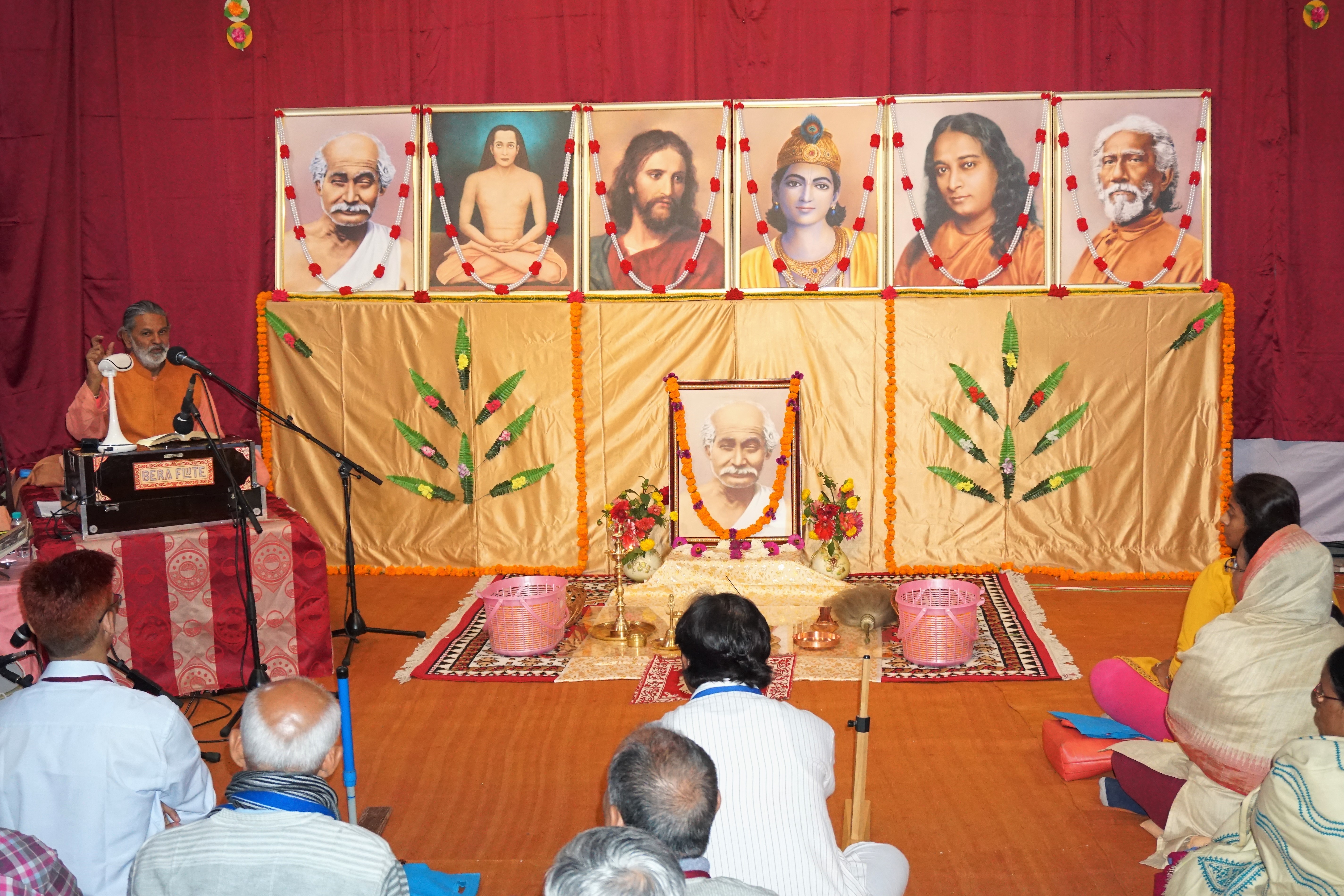
On September 30, 2018, the commemoration day of the Avirbhav Divas of Sri Sri Lahiri Mahsasya, the participating devotees attended a satsanga by Swami Nityanandaji about the great Master's life. He shared that he considered the Guru greater than God because the Lord created maya, but the Guru takes us out of it. Swamiji, in his inimitable style, explained how Sri Sri Lahiri Mahasaya was brought to Mahavatar Babaji and how he brought Kriya Yoga to the world. And that a little effort at meditation will derive results, for everyone, with no distinction based on class or any other criteria. He also pointed out that Kriya Yoga develops intuition and therefore is the solution to all our problems. Then he expounded on Sri Sri Paramahansa Yoganandaji’s life as an example for how God and Gurus help and guide us. Speaking about the organization, he reminded devotees that the Gurus are ever living.
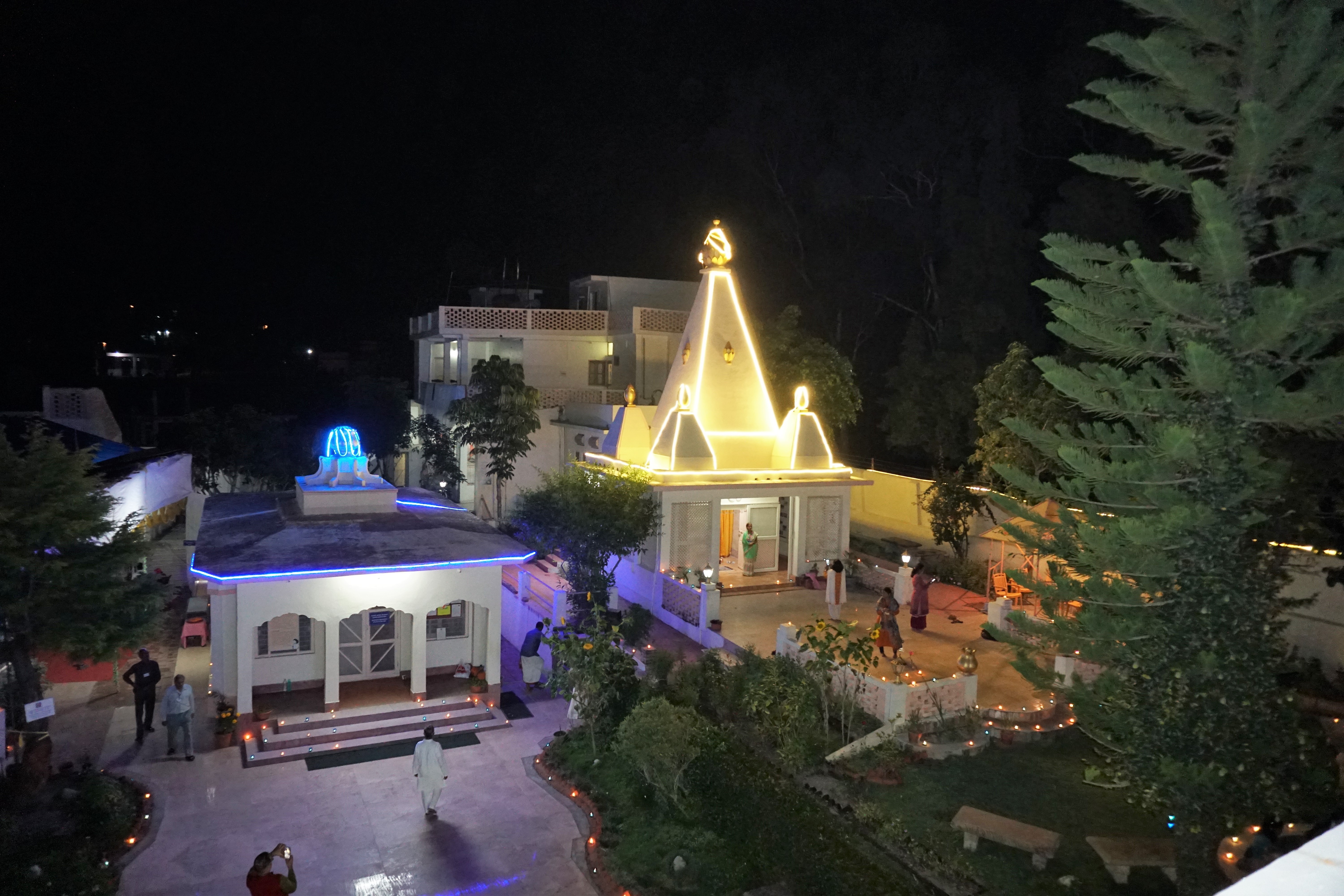
Sri Sri Lahiri Mahasaya himself received Kriya Diksha from Mahavatar Babaji near Dwarahat in 1861, as shared by Gurudeva Sri Sri Paramhansa in his world bestselling spiritual classic - the Autobiography of a Yogi. This was the event that put Dwarahat on the spiritual map of the world.
The traditional prasad, especially served by the monks to the initiates, was followed by the Kriya Review class. The evening had another spiritually and devotionally charged meditation session with chants, bhajans, meditation, arati and pushpanjali, co-led by Swami Vasudevanandaji and Brahmachari Nirliptanandaji, with devotees receiving prasad from the blessed hands of Swamis Nityanandaji and Hiteshanandaji.
To view images from the Sangam, click here.

